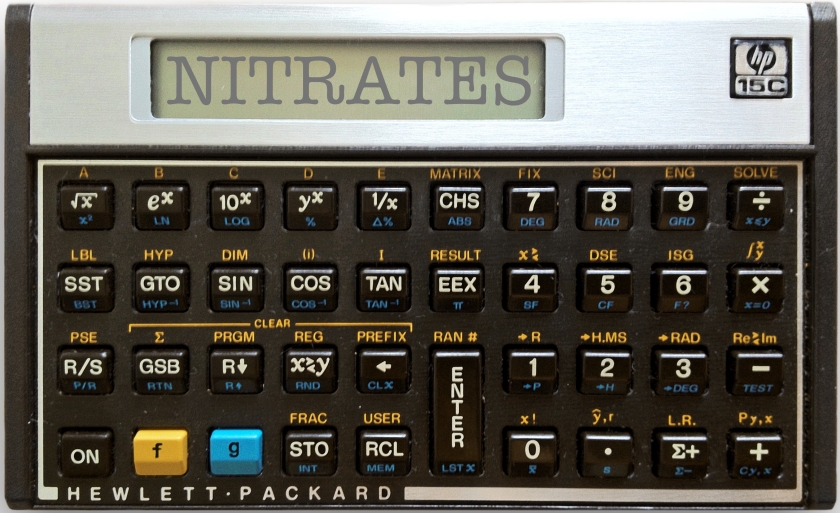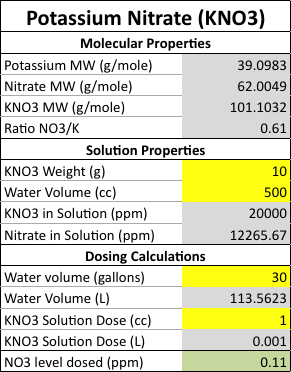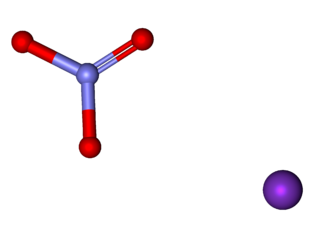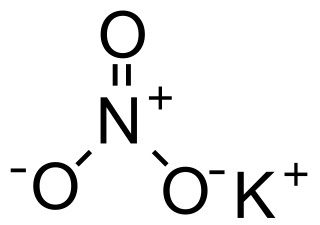
by Stratos
It has become a phenomenon of increasing frequency in the reefing hobby today to have “too clean” of a tank. Zero nitrates, and sometimes even zero phosphates are found behind more and more tank issues. Either can be quite problematic for the tank.
With the ever popular “ULNS” systems and all methods of carbon dosing exponentially increasing in usage, nutrient starvation in our glass boxes is almost as common as the opposite. Pale colors in corals are one of the more common side effects. But there can be many side effects to a tank’s microbial food web ,aka microbial loop. (Also see other entries in the Nutrients section of the blog. –Ed)
Thankfully, there are many ways to increase and maintain nutrients.
Limiting nutrient export (e.g. water changes, reduced skimmer usage, shorter refugium lighting hours, etc) and increasing the rate of nutrients introduced into the system with extra feedings might be the two easiest ways.
However, in some cases, “nutrient dosing” is definitely something of interest – particularly nitrate dosing.
There has been a lot of discussion about the different reagents that could be used – a great one being potassium nitrate (KNO3). Also known as salt peter.
One great source for KNO3 is a product by Spectracide called Spectracide® Stump Remover Granules.

Initially this registered on my radar from an excellent post on Reef2Reef.
I was intrigued by the idea of being able to add exactly what the system needs.
The instructions on the thread are fairly easy and straightforward:
- Add 2 tablespoons of the Sump Remover (granules) in a plastic cup of RODI water.
- Use that to dose approximately one milliliter per ten gallons of aquarium water.
- Then test and adjust accordingly.
Although this is a very simple approach, I had an uneasy feeling which kept me from slapping a quick dilution together and dumping it in. I wanted to have some additional confidence that it would succeed and perform as expected. Knowing that I can easily calculate the exact dilution to raise nitrate exactly, I started digging a little further.
My first data was the SDS (Safety Data Sheet) of the Spectracide product. It states unequivocally that the composition is 100% potassium nitrate. This is a bold statement to make as many SDS like to leave room for impurities – anything up to 99% potassium nitrate would have left the door open for some impurity. 100% purity gives a good comfort in using the product and expecting it to be and perform as predicted.
 Ideally, for my purposes, a calculator is created to assist with the dosing.
Ideally, for my purposes, a calculator is created to assist with the dosing.
The calculator I created (depicted to the left) consists of three main parts.
The first part helps with the creation of a stock solution that has a known nitrate content.
The second part helps with determining how much of that stock should be added in a known volume (your tank’s volume) to increase nitrate by how much.
The third section is where specific doses are calculated to address specific deficiencies.
The calculator is assembled as a Google docs sheet here.
Look closer at the KNO3 molecule in the Molecular Properties section of the calculator.
In order to know how much nitrate we will be adding, we need to know what is the ratio of nitrate is to other atoms in the KNO3 molecule by mass.
That section concludes that the ratio is about .61. Or in other words, about 61% of the weight of the KNO3 molecule is nitrate.
Solution Properties, the second section of the table, shows that if we create a stock solution of 10 grams of KNO3 in 500 milliliters of RODI water we are going to have a solution that has approximately 12,265 ppm of nitrate.
The third block, Dosing Calculations, shows that if we take 1 milliliter of the stock solution and we dose it into a 30 gallon system, we are going to increase nitrate by 0.1 ppm.
Indeed, following this, I created the depicted solution and dosed 5 milliliters in my 30 gallon tank and after an hour, when I tested, I had 0.5 ppm of nitrate.
It’s worth noting that to help keep the integrity of the calculations, the sheet is shared as “view only”.
You can still make a copy of it on your drive or if you don’t have a Google account you can also download the file to your computer.
In that calculator, there are a couple more things worth mentioning.
First, the other different forms of nitrate available also have calculators built into the Full tab of the spreadsheet – namely sodium nitrate and calcium nitrate each have their own calculator table.
It is fairly straight forward to make a similar table for any salt like those just by looking at the molecule and determining the nitrate ratio. For instance, the calcium nitrate molecule has two nitrates for one calcium. That has to be taken into account when calculating as this relationship makes it “nitrate heavy”. This methodology can be used for other compounds as well. Another good example checmical is potassium chloride for dosing potassium in the tank, but without affecting nitrates. The idea is the same within the calculator.
Secondly, there is also a tab called Simple which allows for a quick and dirty calculation resembling the ones everyone is used to from the venerable Reef Chemisty Calculator, and others.
The Simple View tab answers the question “how many grams of potassium nitrate to add to the tank to increase by how many ppm”. This foregoes the middle step of creating a stock solution and dosing that one which might be useful when dosing with a pump.
All things considered, any method of adding it can work. If you want something simple, then just putting the recipe together from the post on Reef2Reef might be all you need. If you want to achieve more control, the calculator might be more your style.
Either way, keep your corals fed!



Hello Matt. I’m looking to dose Nitrate manually and I believe I have interpreted your calculator correctly but would really feel better if I could get a confirmation.
My nitrates are at zero consistently due to a low bio load and a large amount of filtration. I have a newer 200 gallon tank and want to get coralline and caulerpa growing. Since I add 1 gallon of RO/DI water every morning I believe I could just add 5 grams of the spectracide stump remover to the gallon and this should dose to 4 ppm. Does this seem correct per the below?
Potassium Nitrate (KNO3)
Molecular Properties
Potassium MW (g/mole) 39.0983
Nitrate MW (g/mole) 62.0049
KNO3 MW (g/mole) 101.1032
Ratio NO3/K 0.613283259
Solution Properties
KNO3 Weight (g) 5
Water Volume (cc) 3785
KNO3 in Solution (ppm) 1321.003963
Nitrate in Solution (ppm) 810.1496157
Dosing Calculations
Water volume (gallons) 200
Water Volume (L) 757.082
KNO3 Solution Dose (cc) 3785
KNO3 Solution Dose (L) 3.785
NO3 level dosed (ppm) 4.05030934
LikeLike
I haven’t checked the actual numbers for you, but it looks like you did it right! 👍
If you have a new aquarium with lots of extra filtration, the most correct answer might be to turn off/remove all of the extras until such time as they are needed. I would suggest at least considering this before you commence with dosing the tank.
If you still choose to proceed with dosing, there are some other considerations such as the tank’s phospahte level. As a rule, do not dose nitrates into a tank that has very low, or zero, phosphate levels. Dose phosphates first, or at the same time.
Adding the dosing material to your top-off water is a good strategy for things like this (but lacks consistency for some purposes). While you’re at it, you should also consider setting up an automatic top-off system to add that RODI water for you throughout the day, based on the water level of the tank.
Caulerpa and most other popular aquarium macroalgae are fast growing and need lots of nutrients…you might consider waitinng until a later phase of the tank to add it when those nutrients will natually be abundant from your feeding routine. (There are exceptions….I think Codium is one of the slower-growing macroalgae available.)
P.S. I didn’t write this article, nor the calculator that accompnies it. A user/friend on Reef2Reef (“Stratos”) wrote this one for the site.
LikeLike